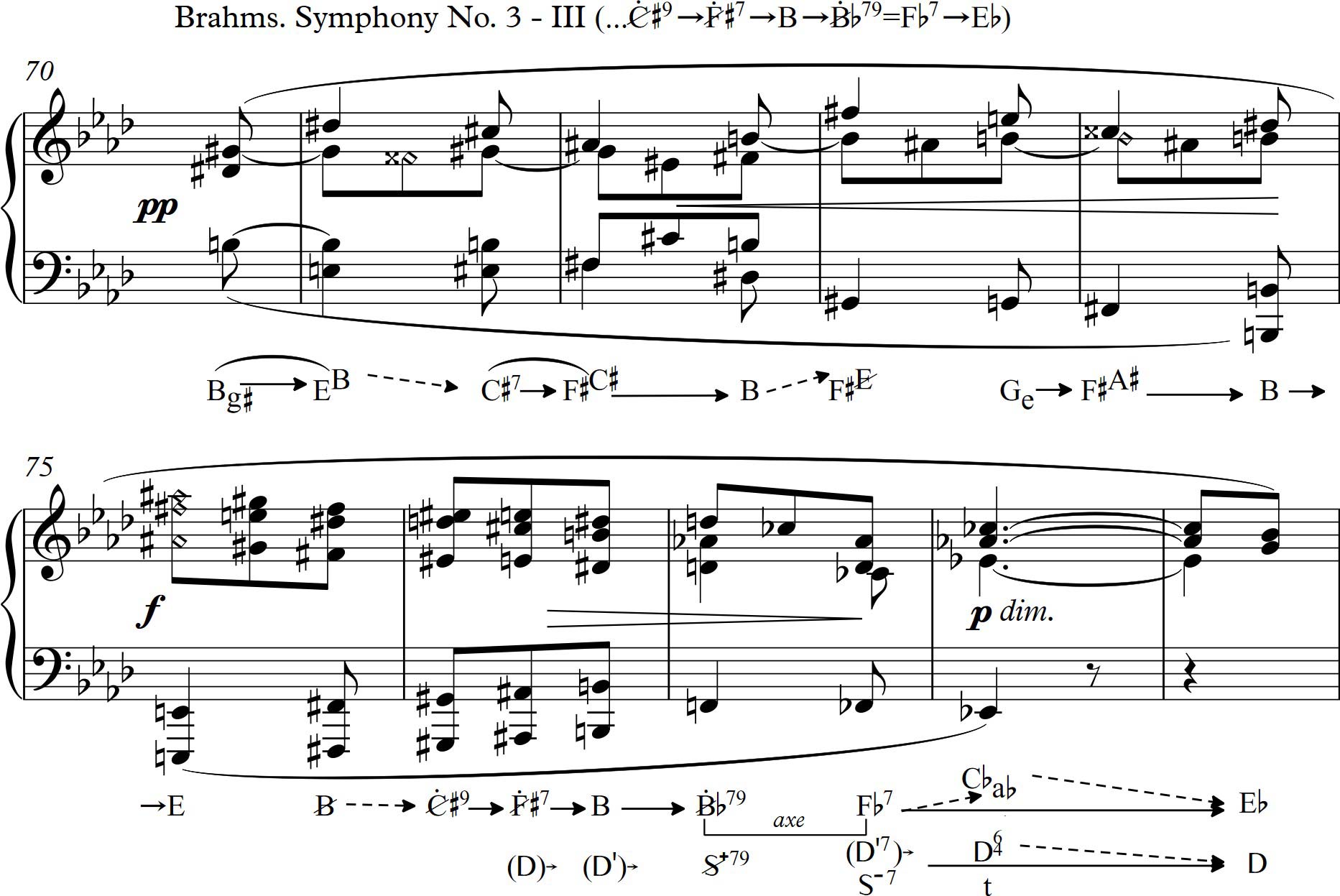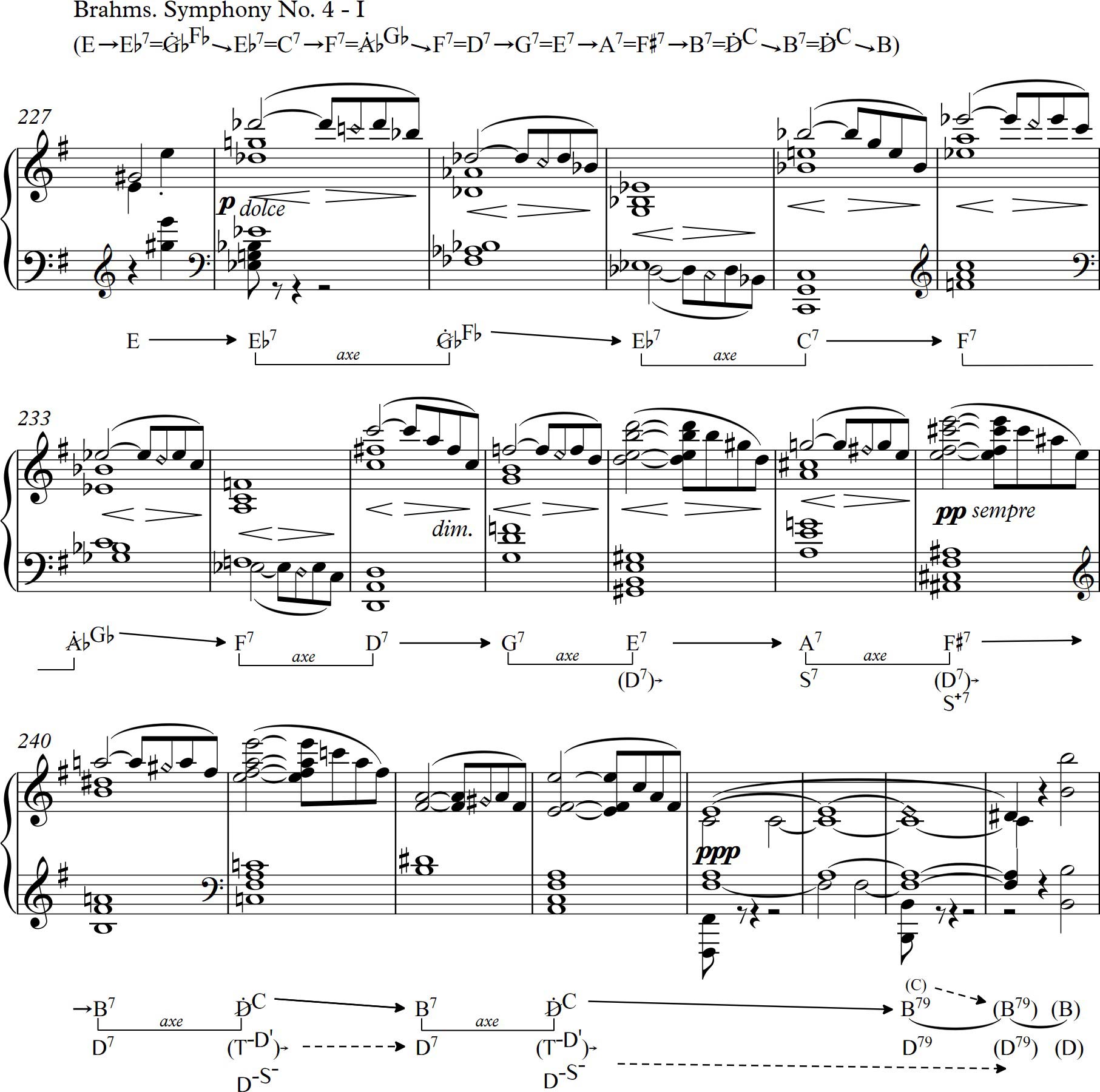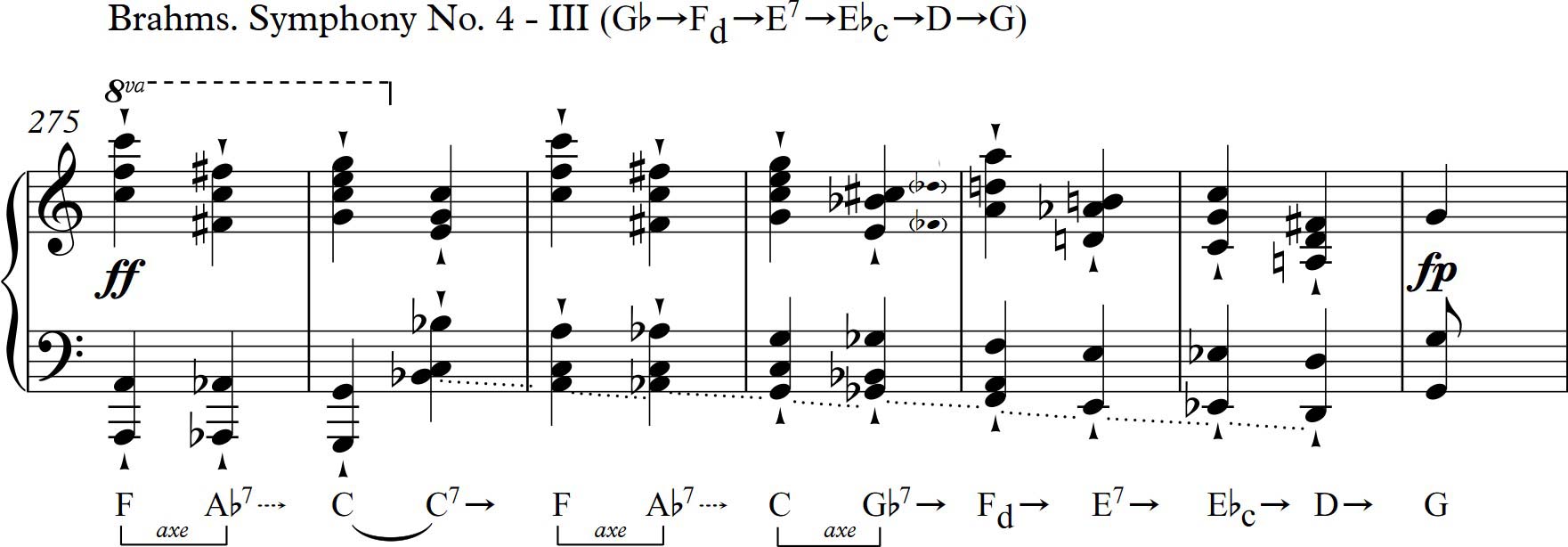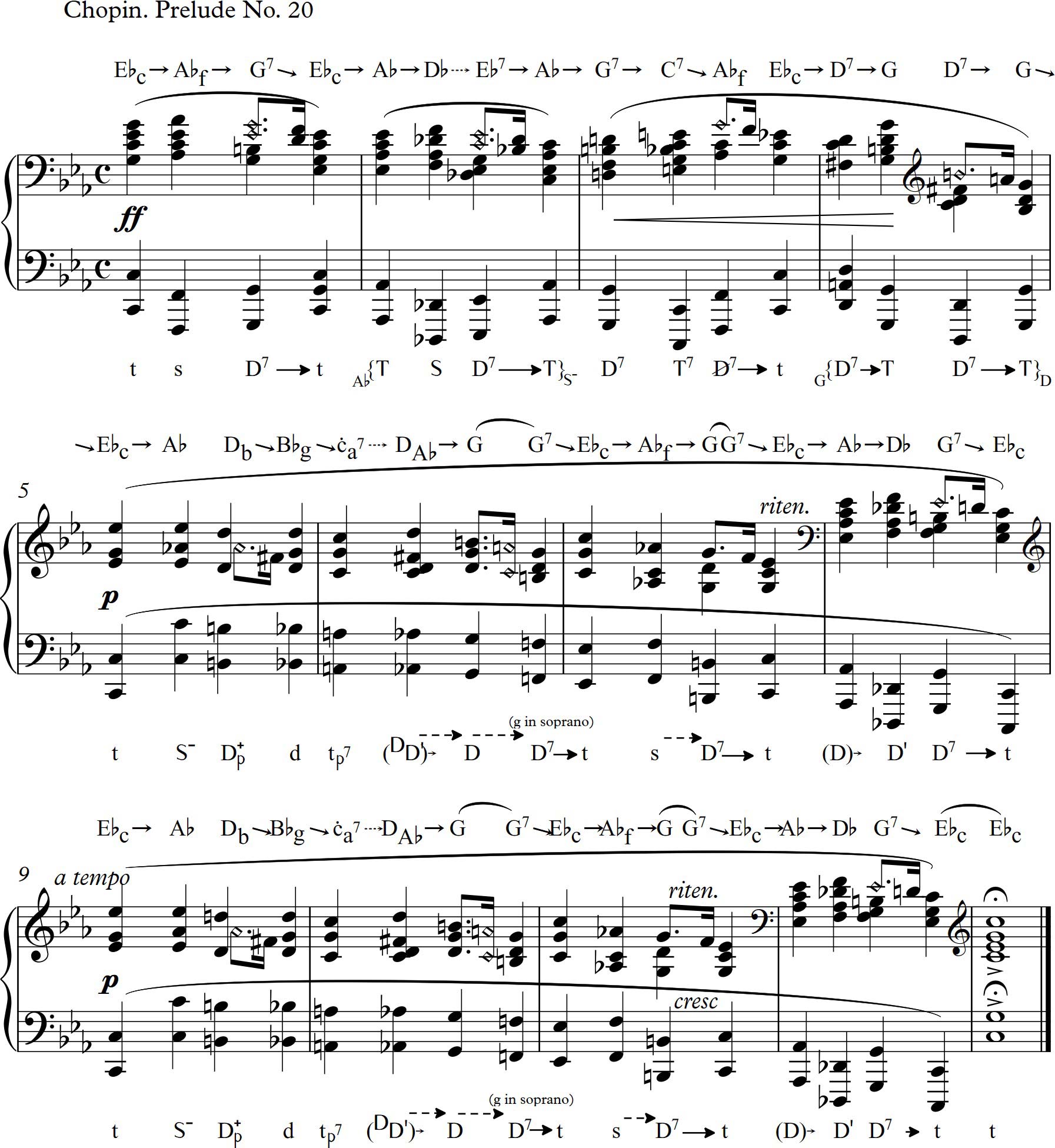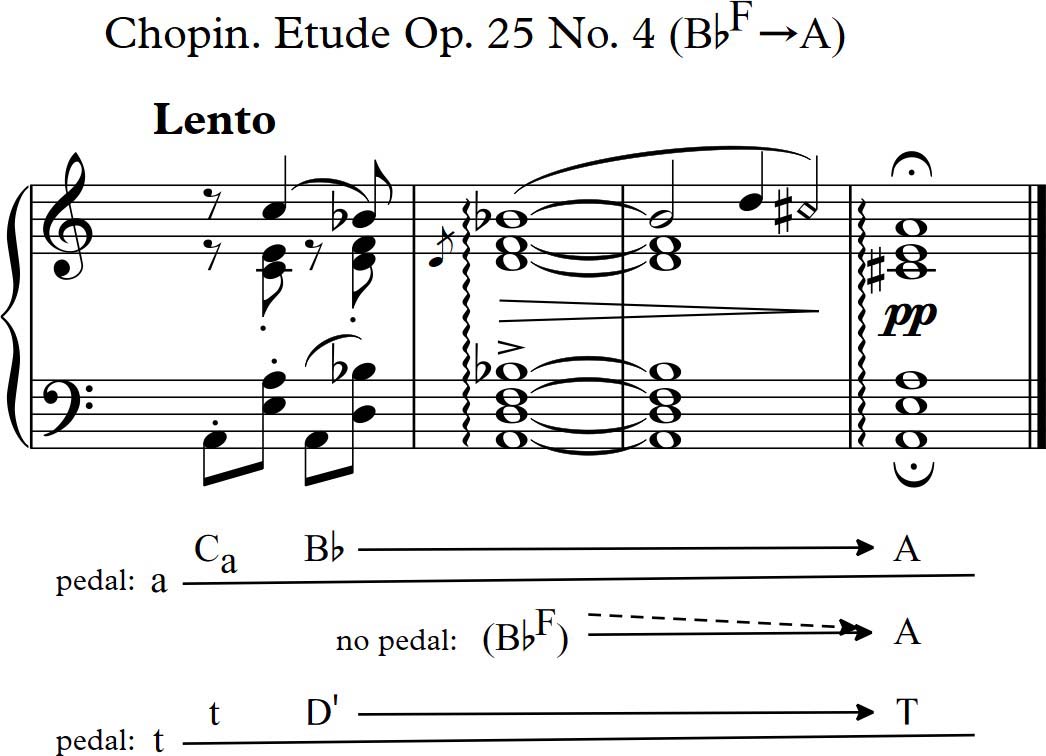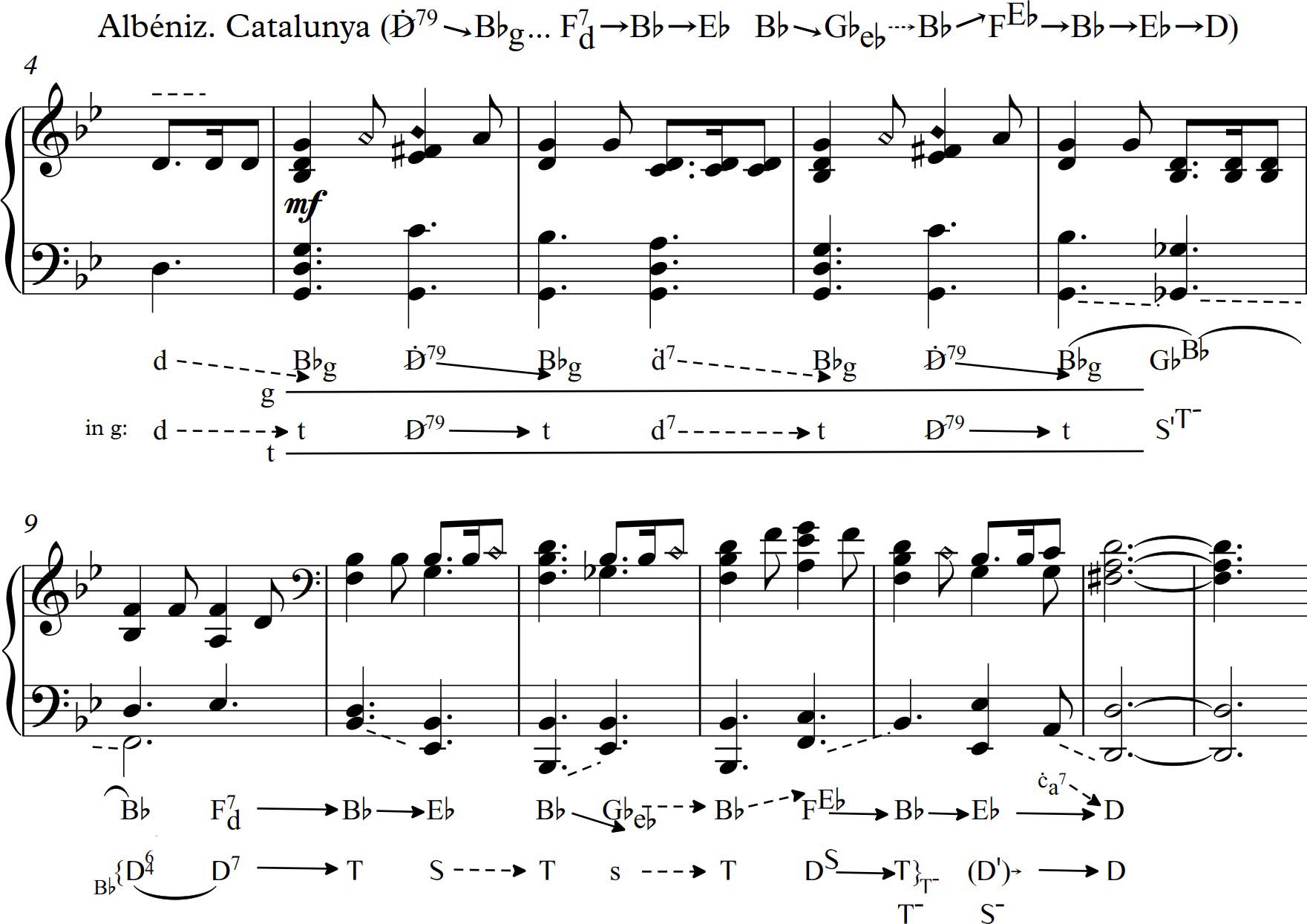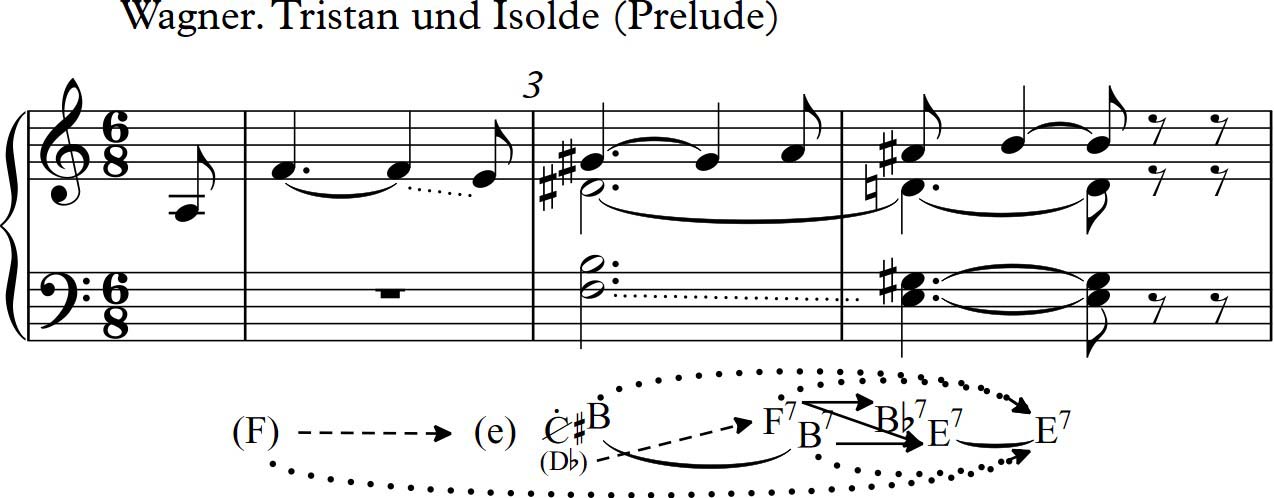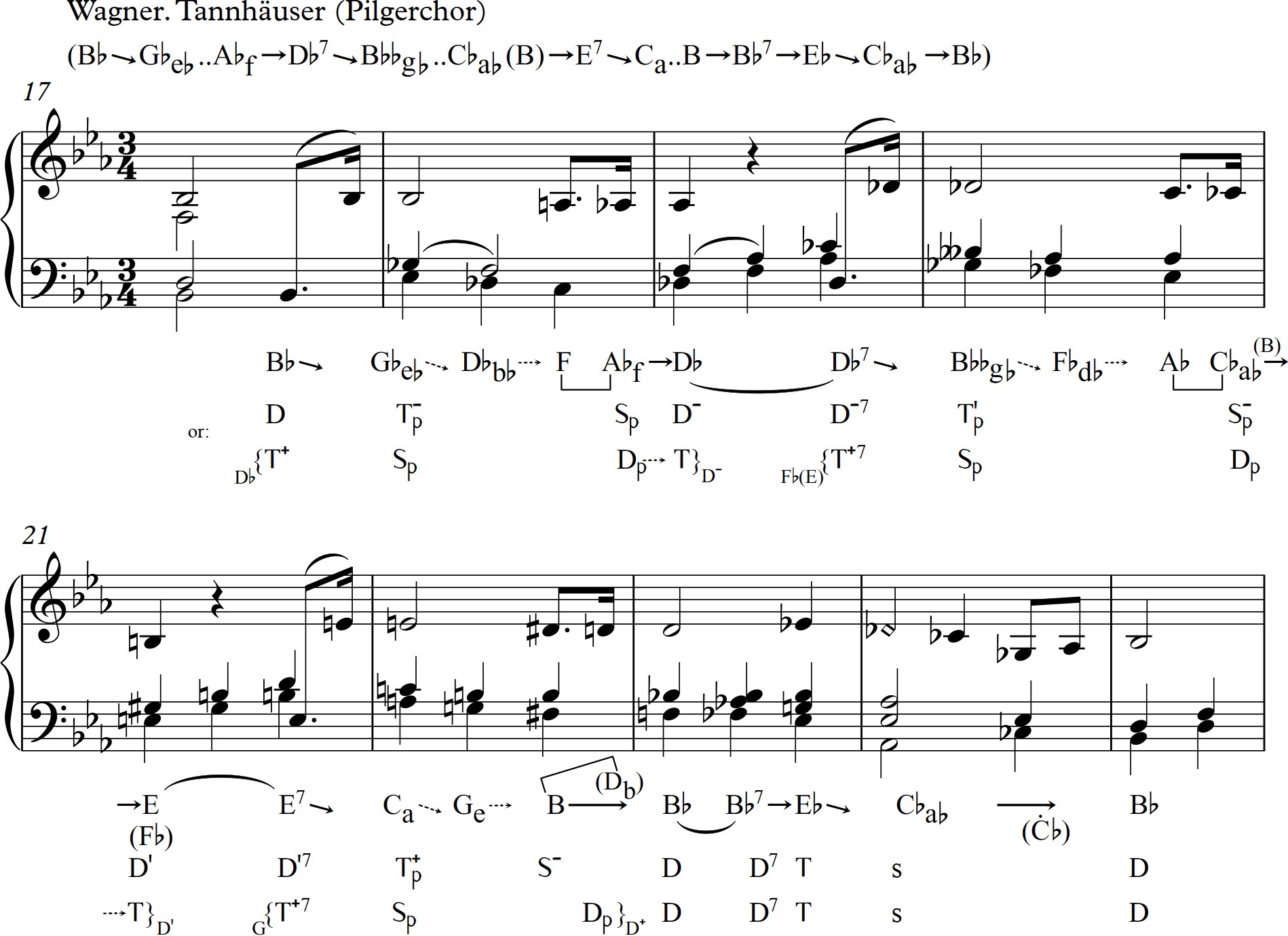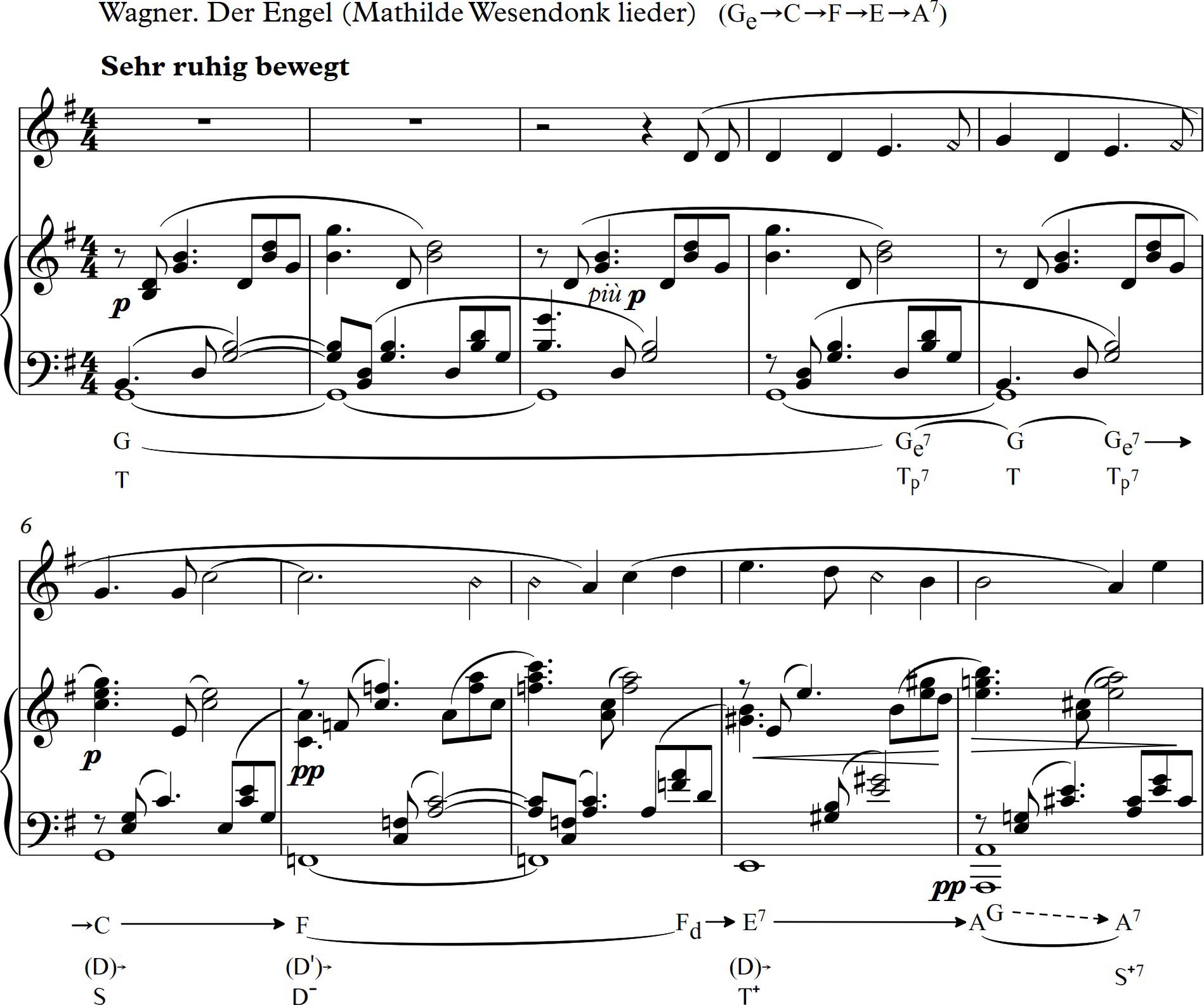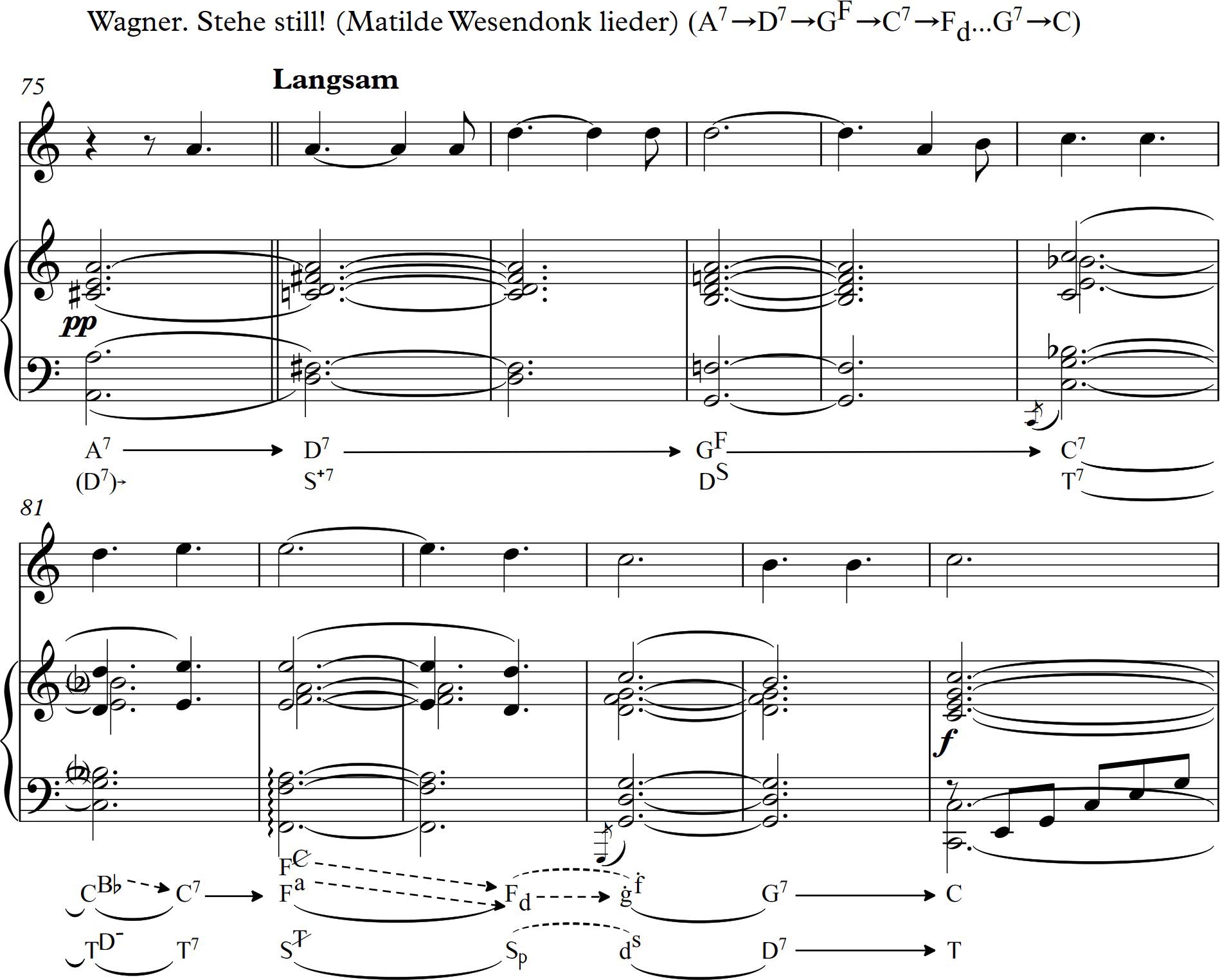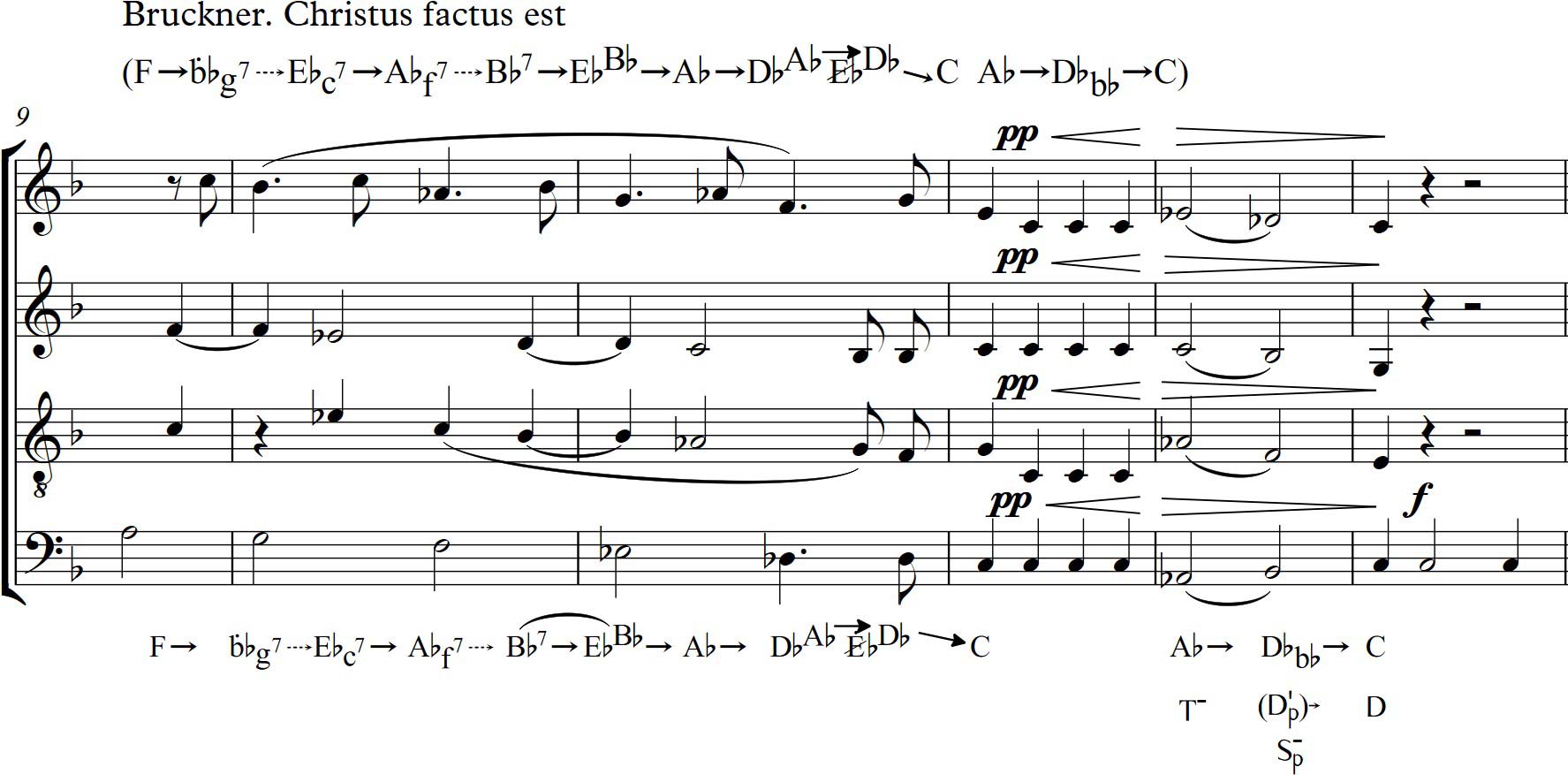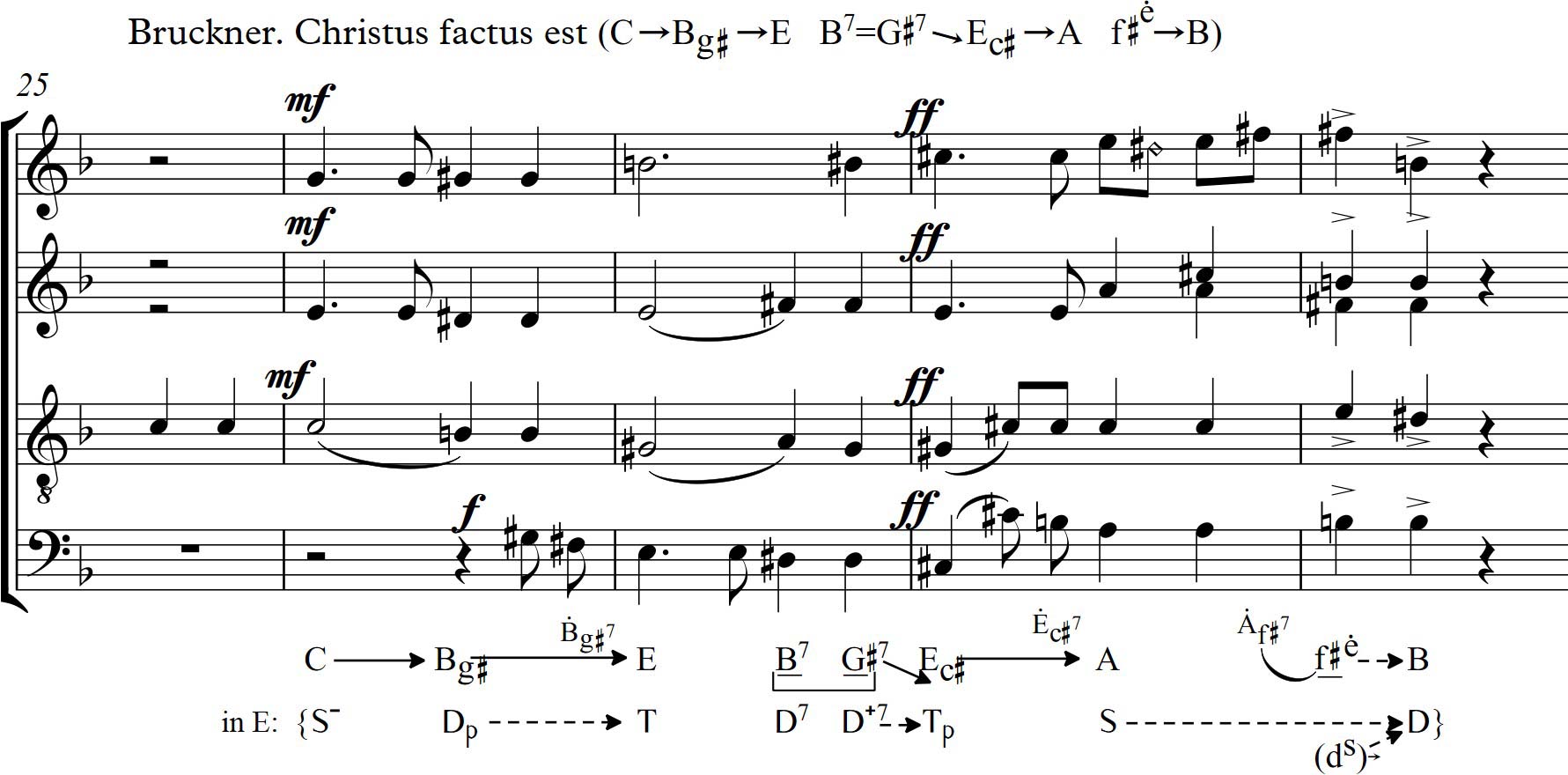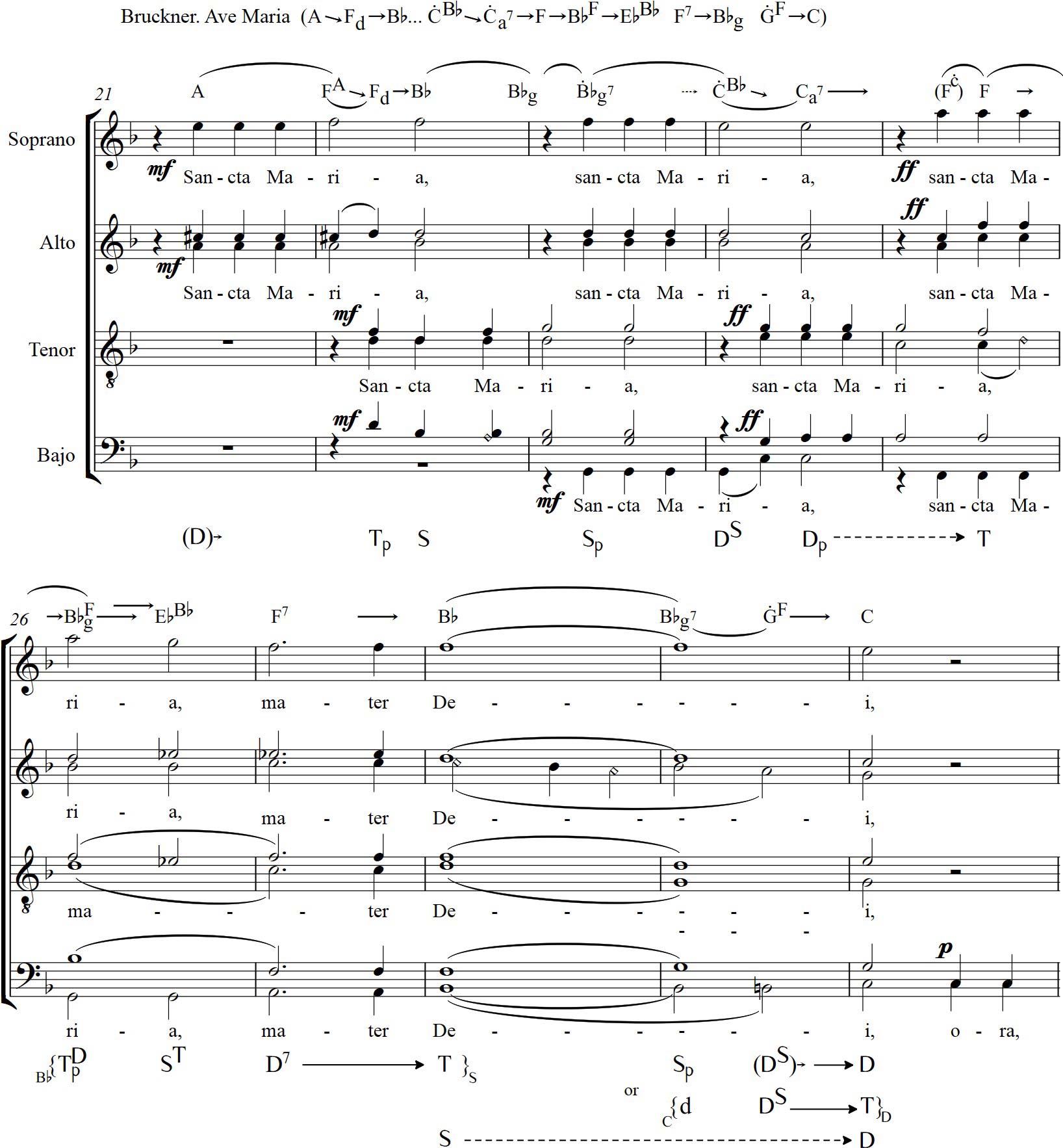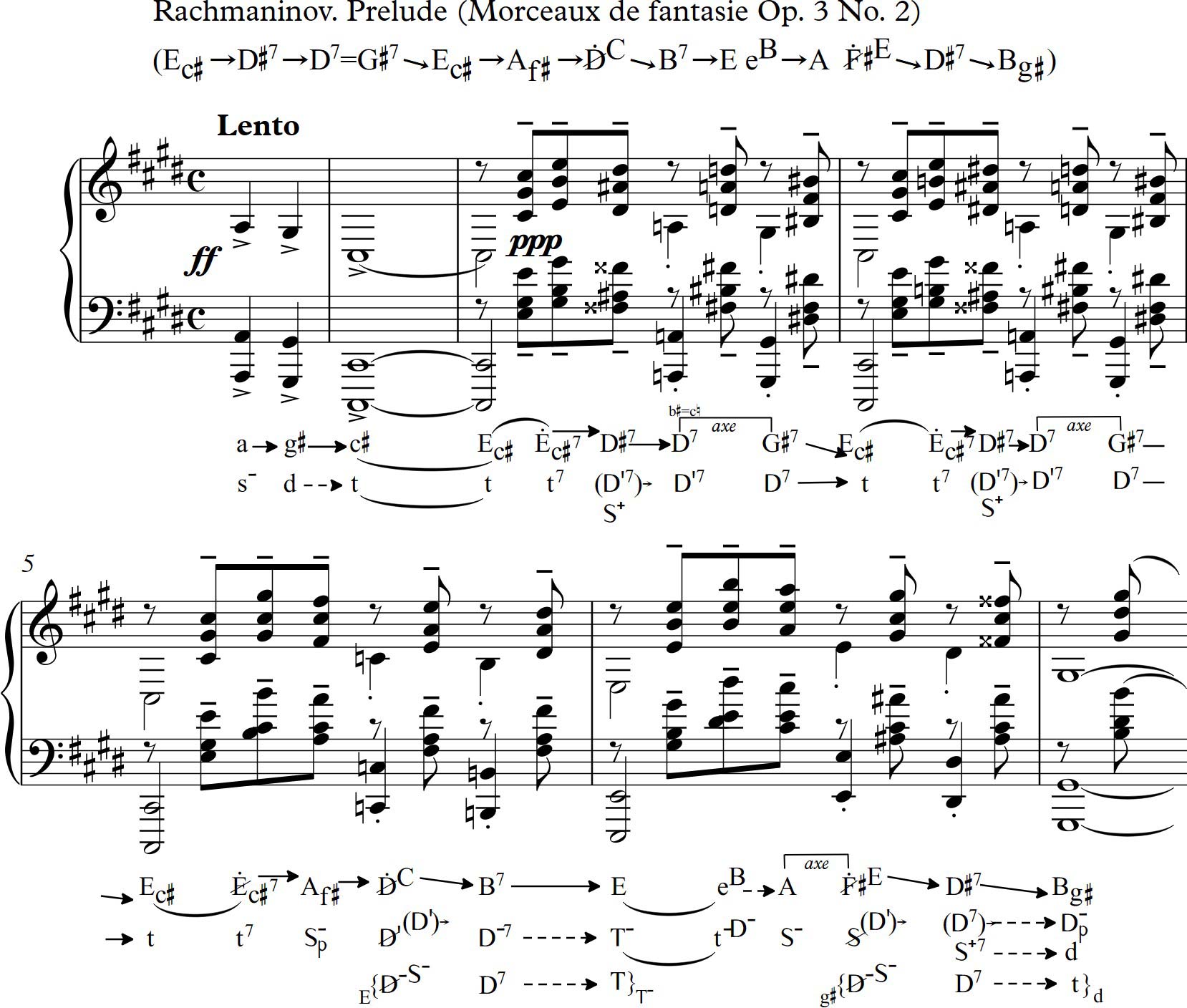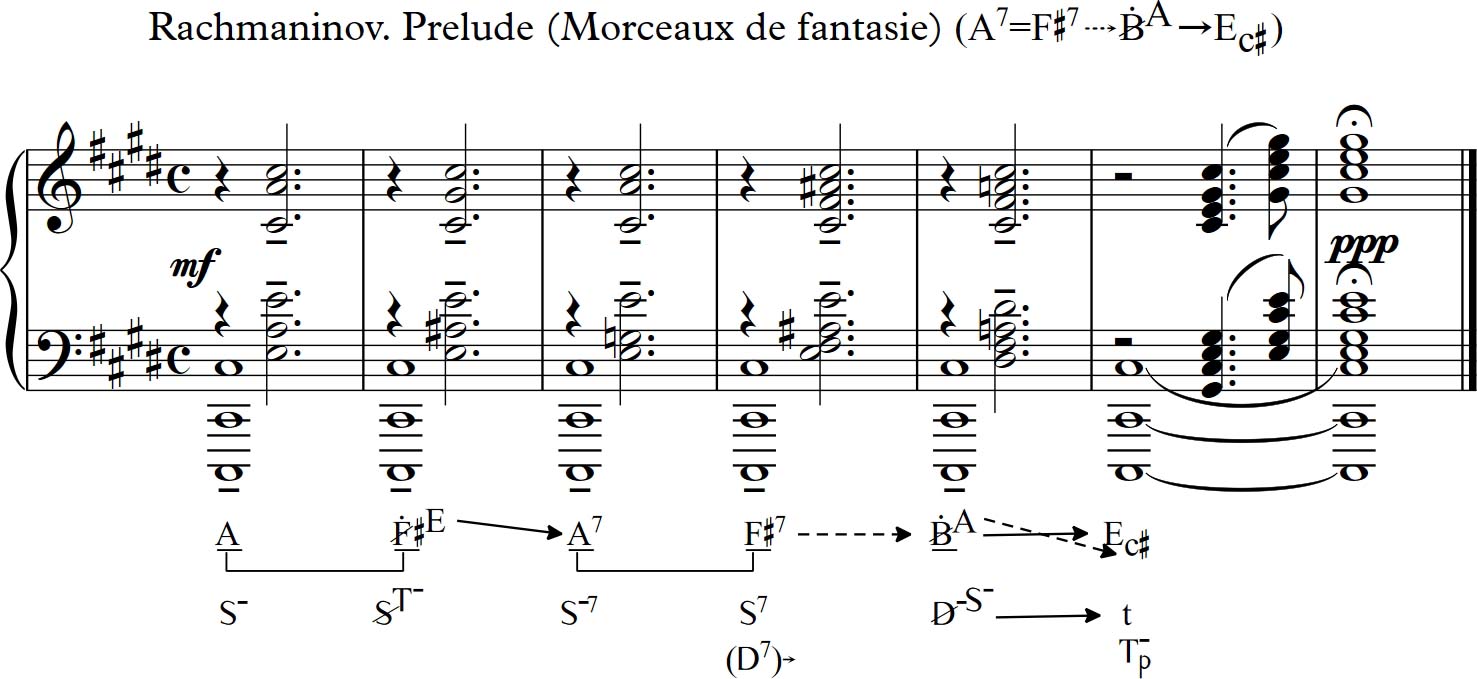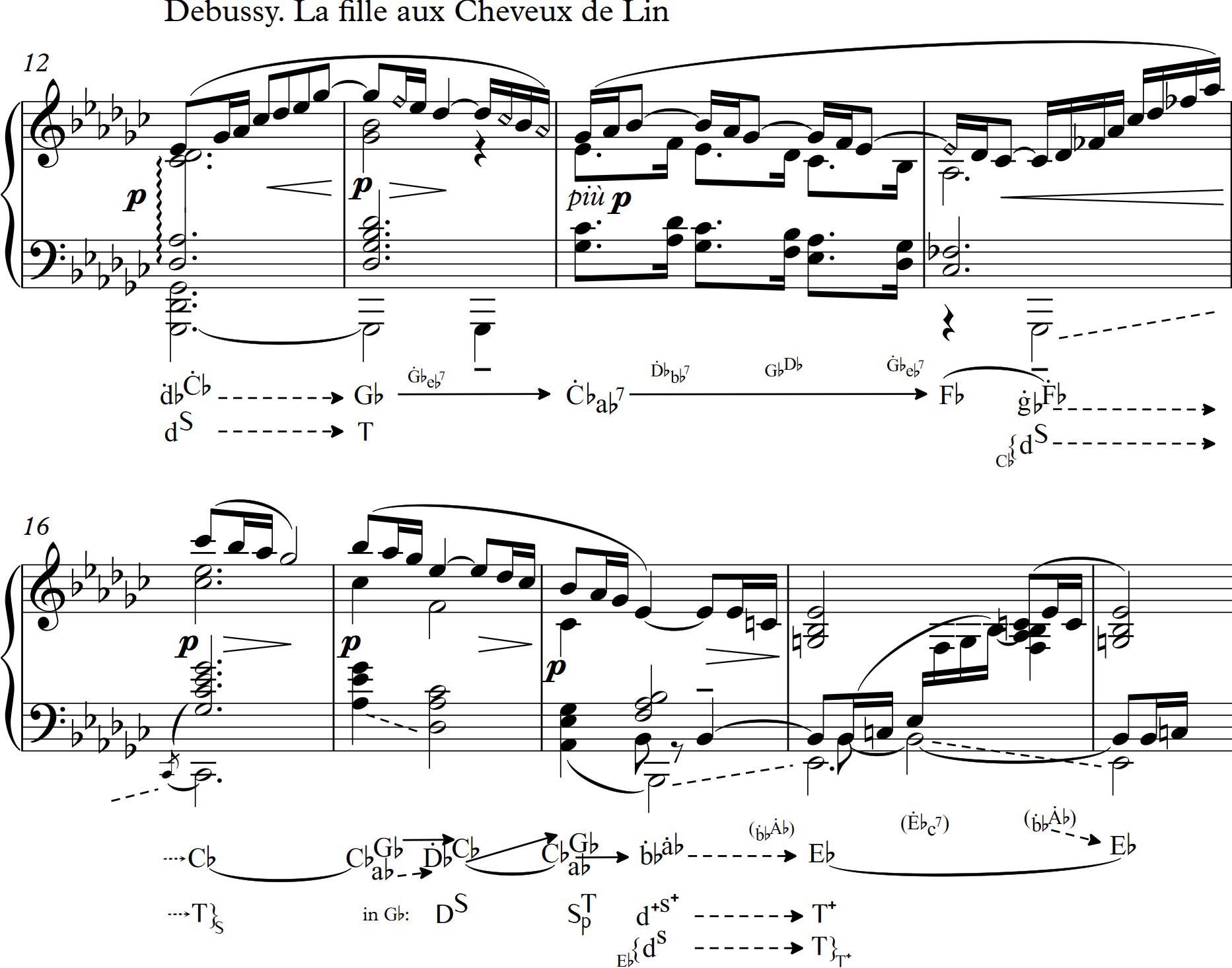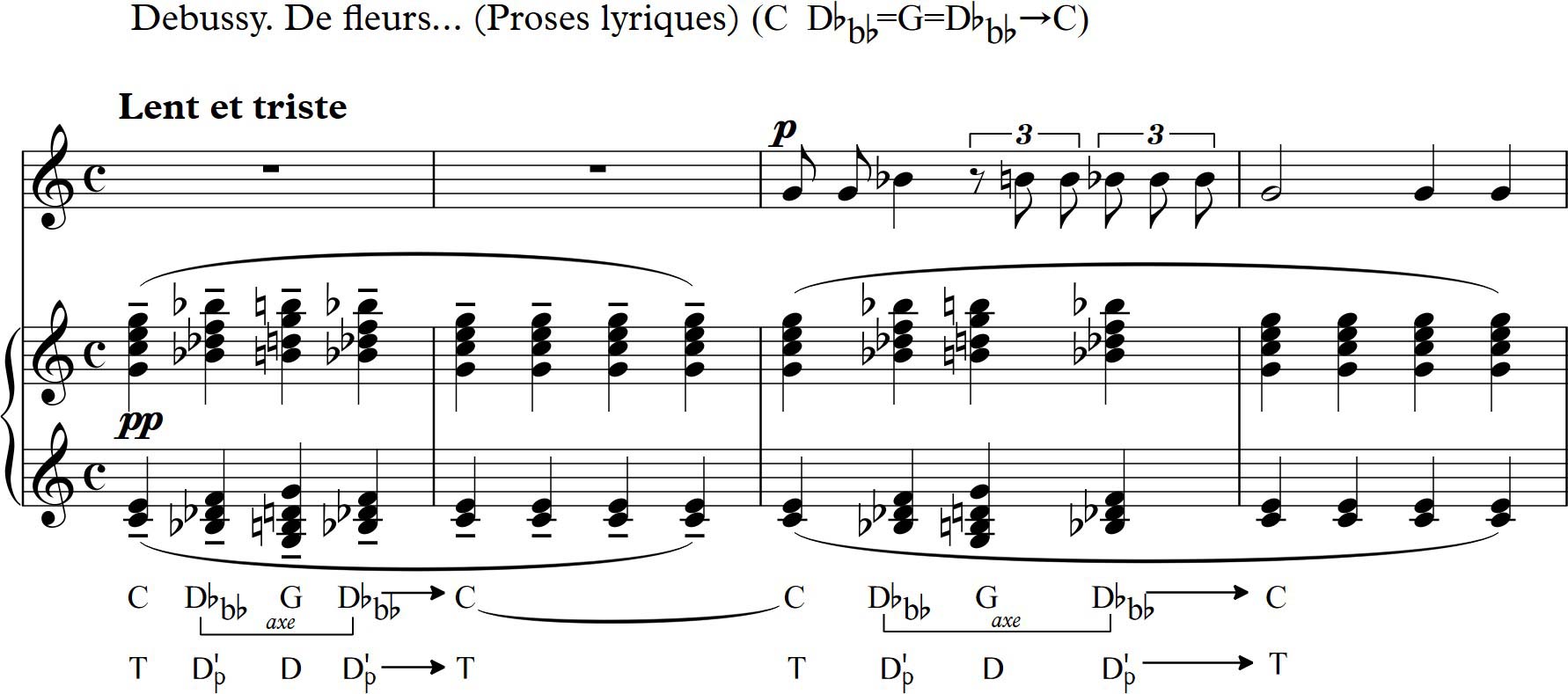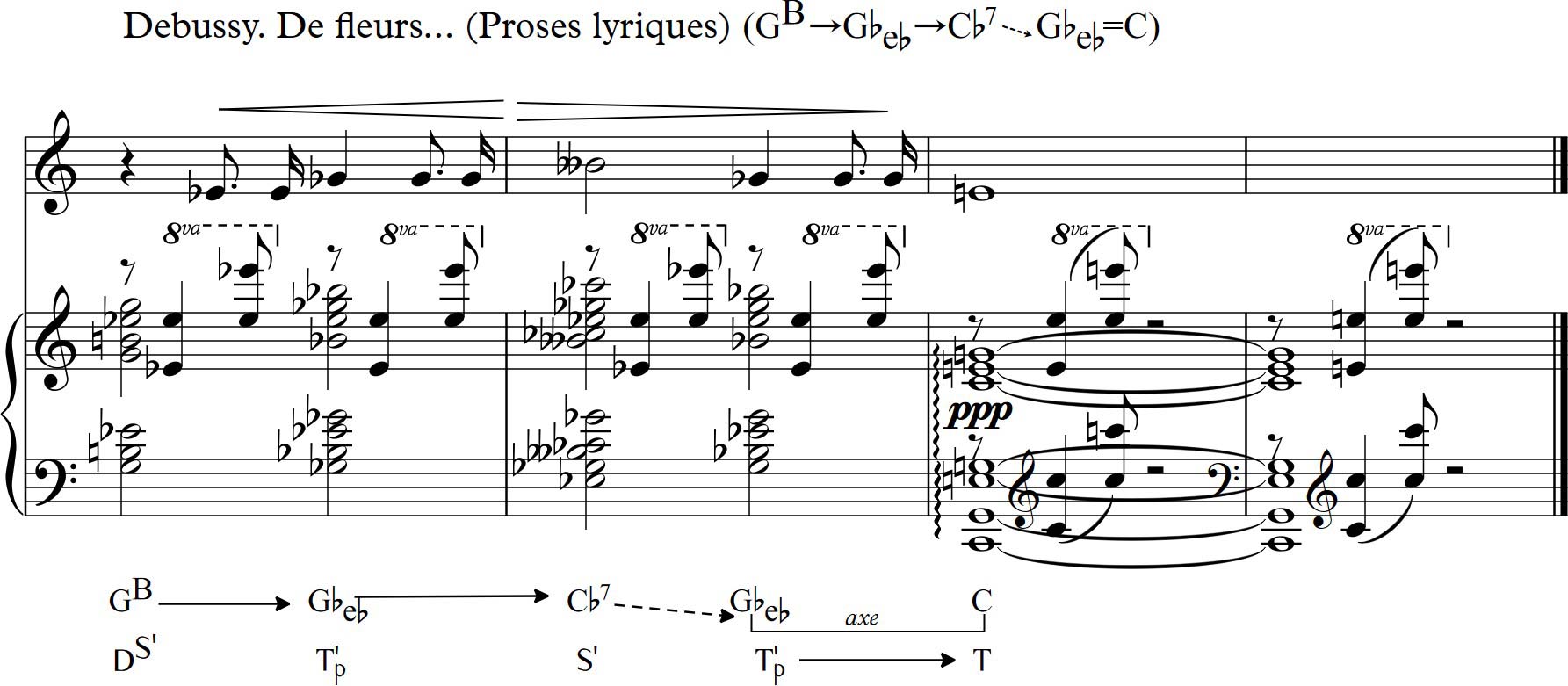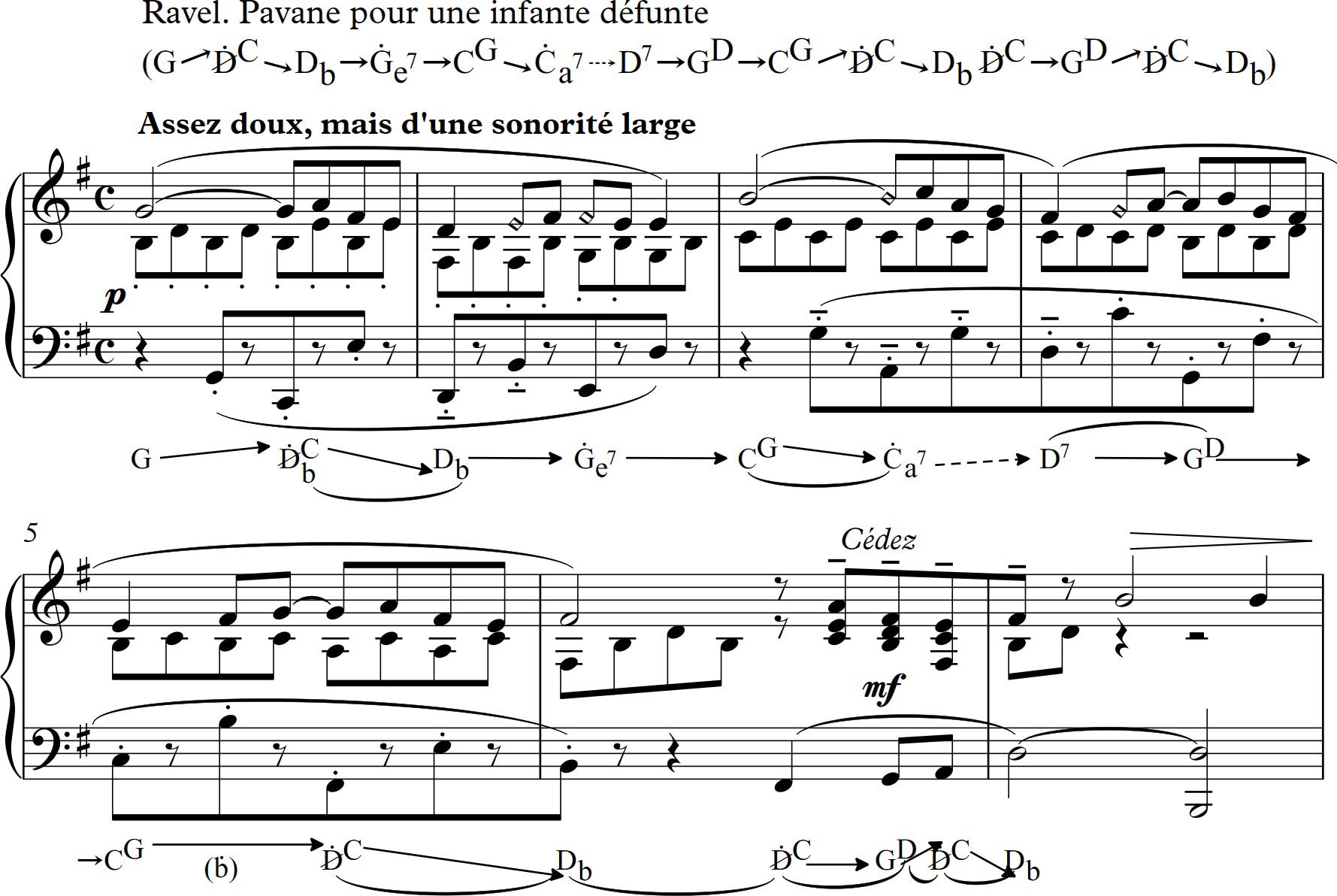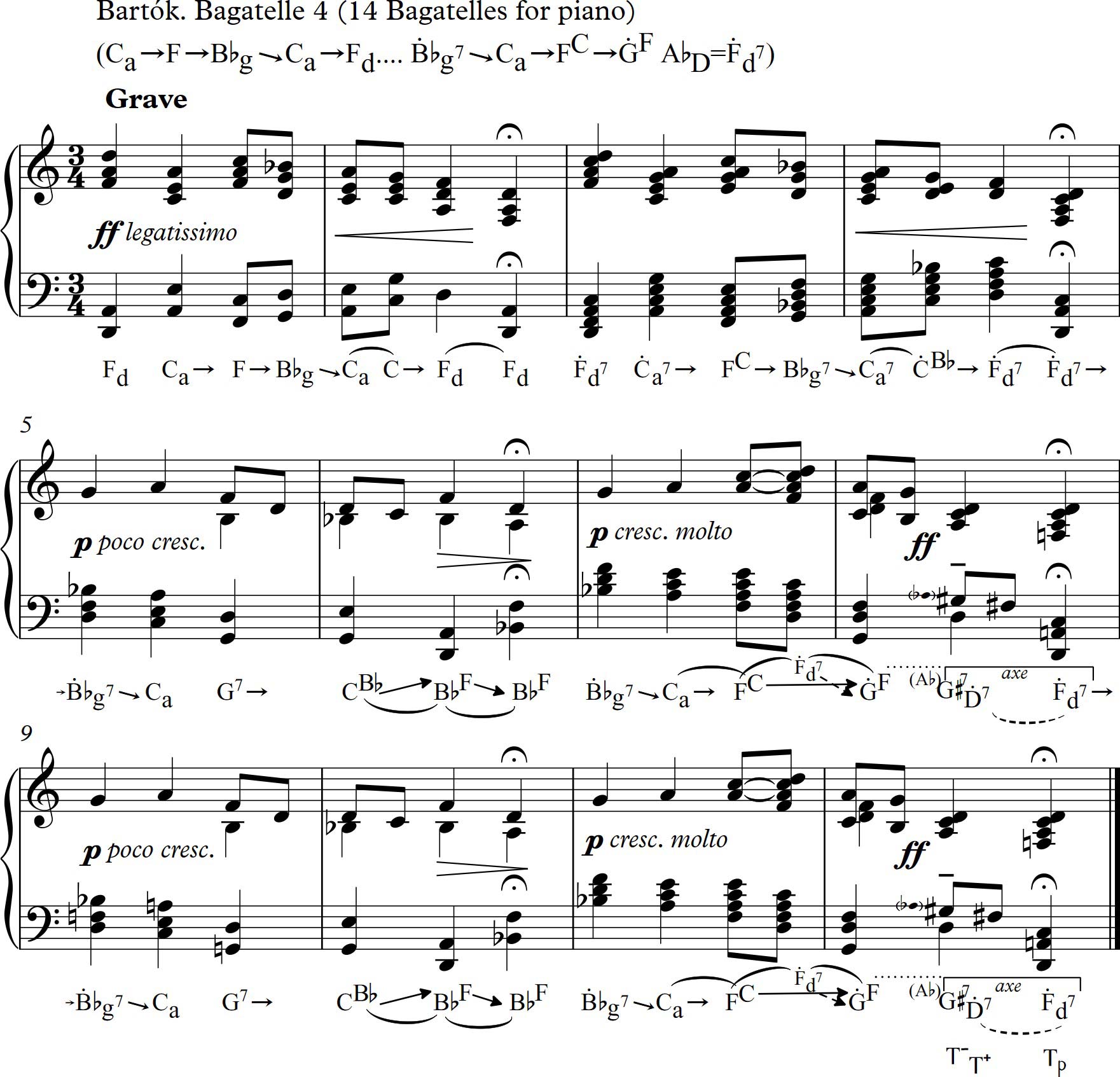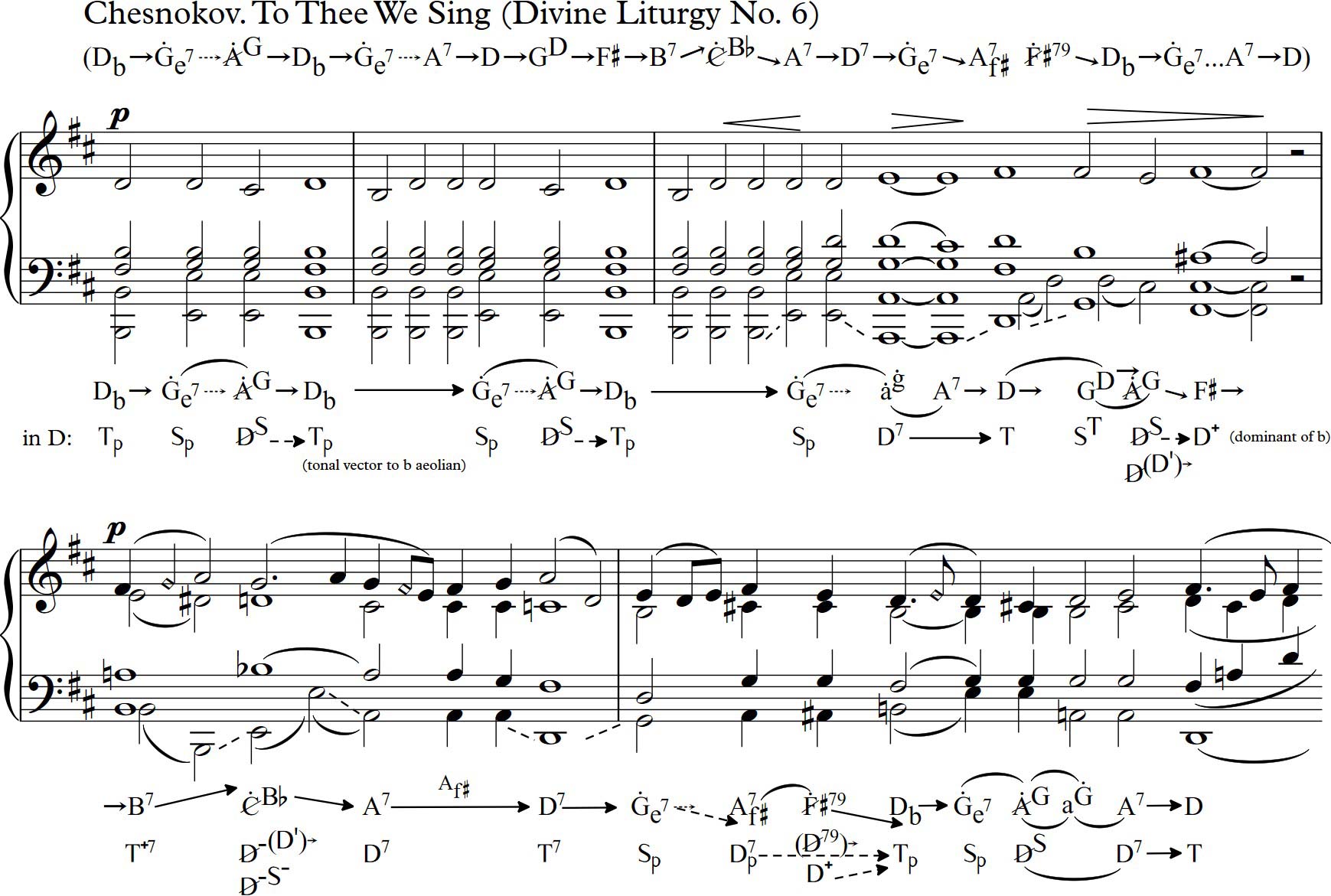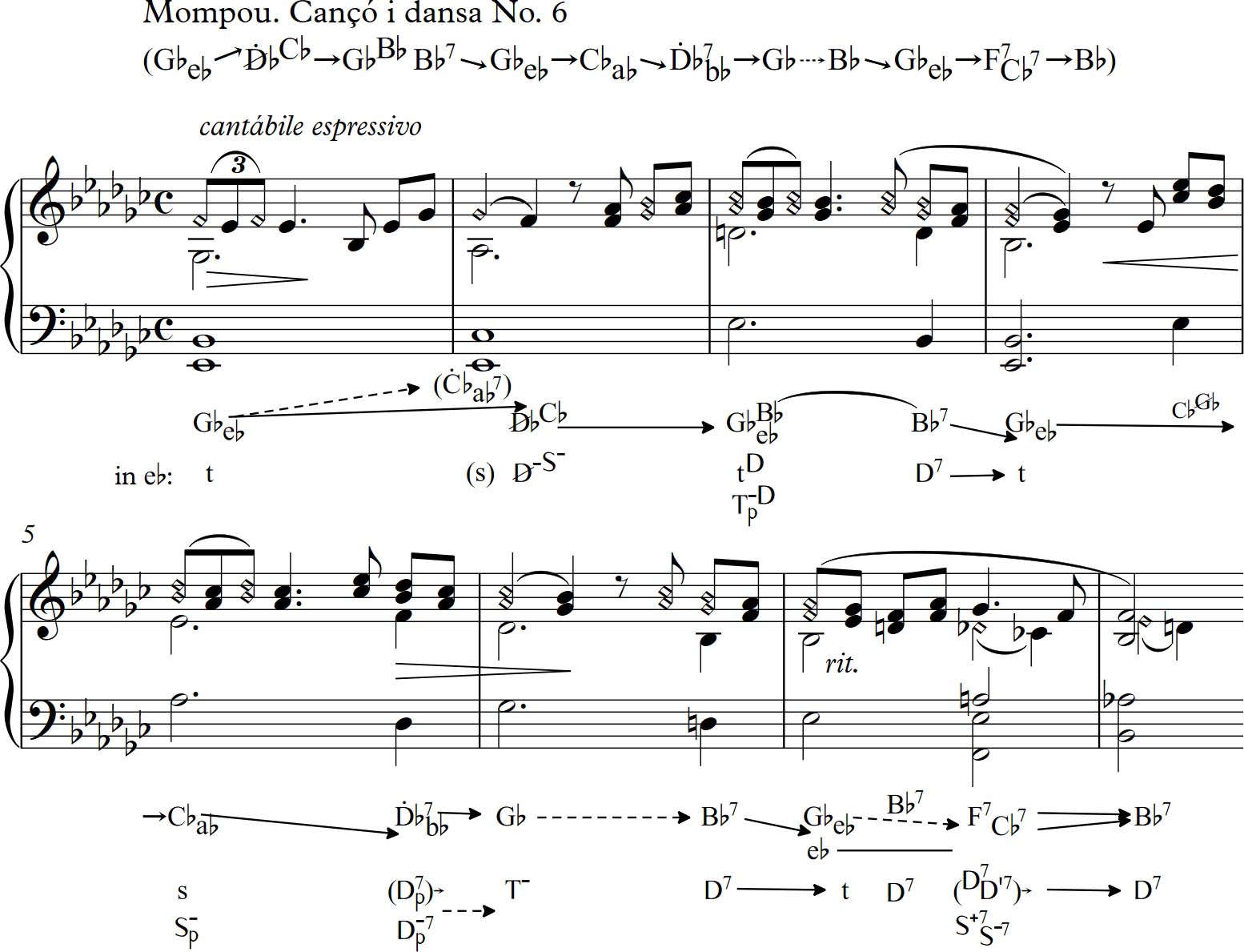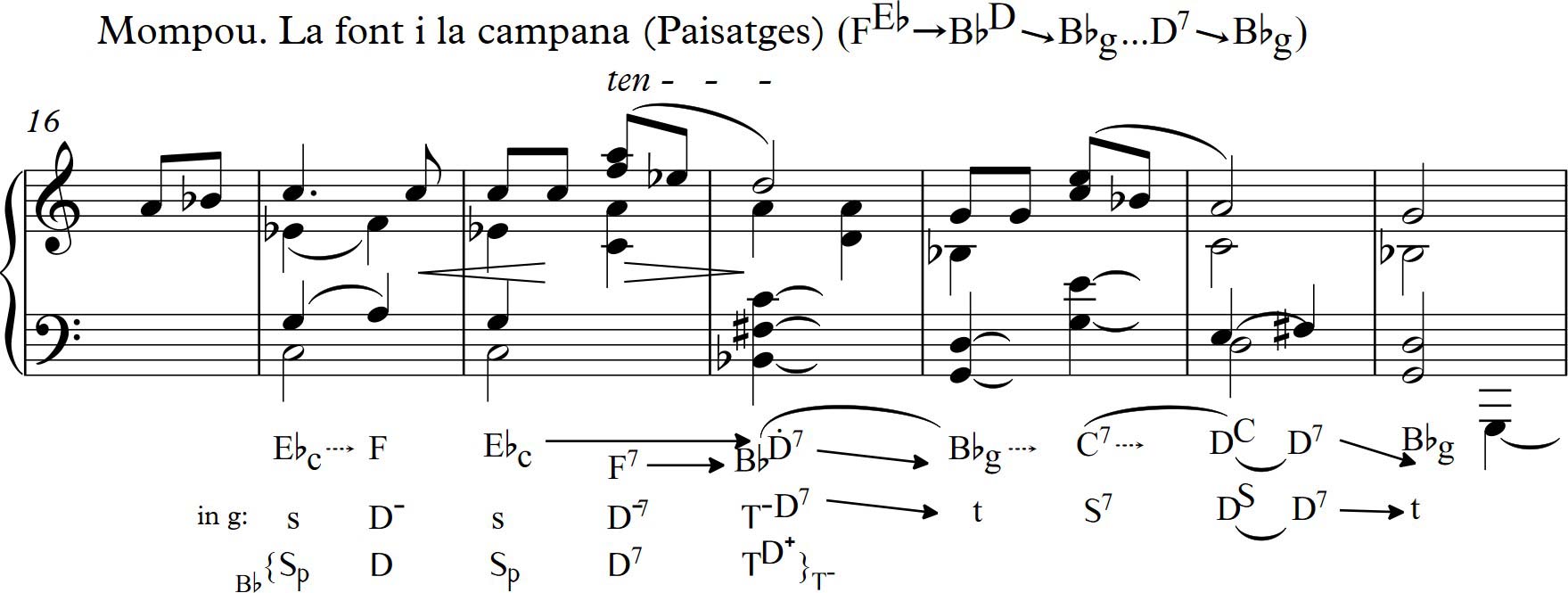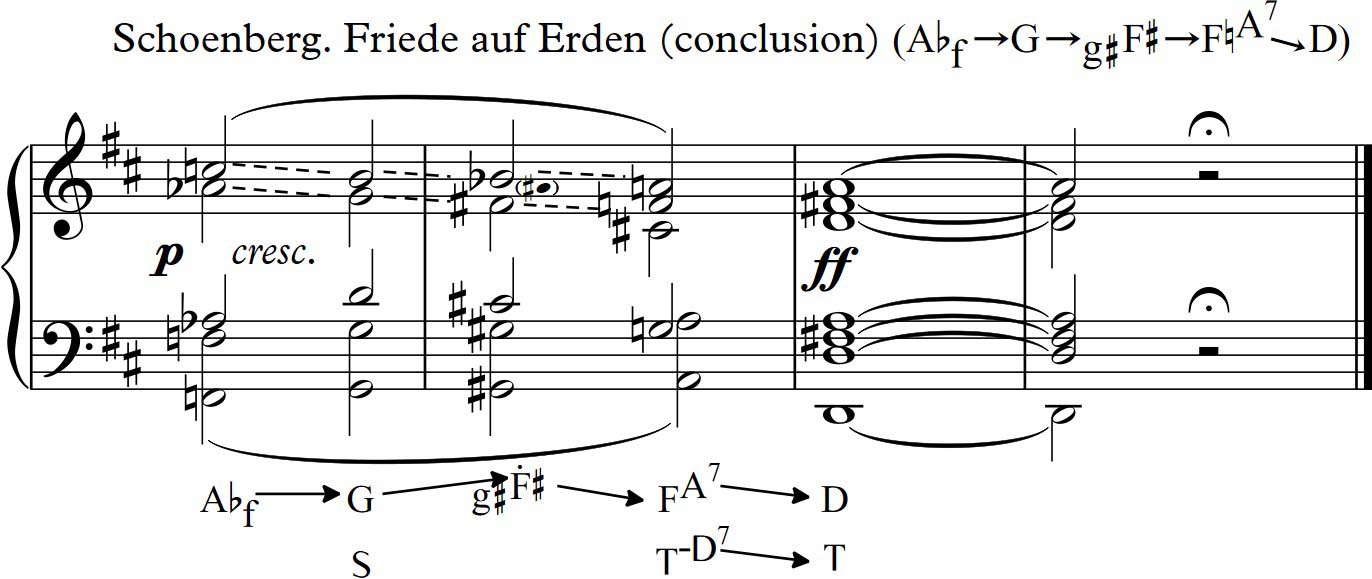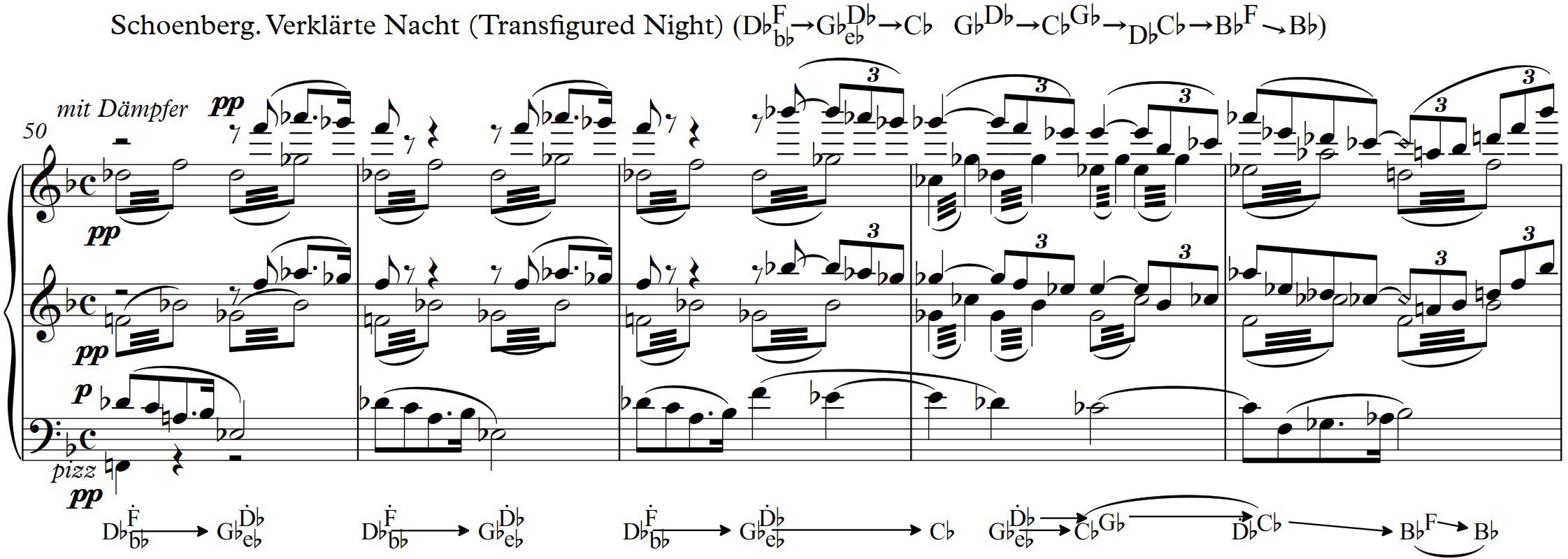7. Examples of homotonic
and tonal analyses
In this chapter we will give examples of works by different composers that will show the utility of separating the chords according to the fundamentals that define them, as we have seen in chapter 3, since they provide us with information about their internal harmonic tensions, mainly the "quasi-fifth" tensions of M3 and tritone intervals. In turn, thanks to the structure of the significant harmonics for the auditory system (which, in relation to the fundamental, also form intervals of M3 and tritone), are fundamental tones representing the chord.
The local homotonic relaxions between chords (see summary in 4.4) are represented by an arrow. When they are secondary relaxions (Locrian or Dorian) or when the «quasi-fifth» tensions resolve in complex chords or in secondary fundamentals, we draw the arrow with a dashed line, although we do not always indicate the secondary homotonic relaxions, especially the Doric one, since they are very numerous.
We have looked for examples with great amount of homotonic relaxions in few measures. Searching in the musical literature is not at all difficult to find them, but normally these relaxed progressions between chords are not so concentrated.
To the right or below the title of the musical work we have placed a diagram of the homotonic relaxions of the analyzed fragment and below the last staff (in some examples on the first staff) we can see the detailed homotonic analysis. Sometimes, we have united sequences of chords with fundamentals in the same tonal axis with a "vertical square bracket line".
In most examples we have also added a line (or two) with the analysis of the tonal functions according to the functional symbology explained in 5.3. Sometimes we place a second line or another symbol below to show an alternative functional symbology. We also draw an arrow when there is tonal relaxion, which may or may not coincide with the homotonic one. We feel tonal relaxion basically when we hear the tonic chord (which may be local) or when music rests on the dominant (which can also be local). If the tonal relaxion is weak (because its tonal field is also weak), we also indicate this with a dashed line. Transient modulations are indicated with brackets and inside them we show the function of the chords from the point of view of the new tone, which is specified in the lower part of the first bracket. At the bottom of the second bracket, which closes the transient modulation, we put the new tone function with reference to the main tone/key. Sometimes we put the functional symbology from the point of view of the two tonalities, in two lines, one with brackets and the other without them.















